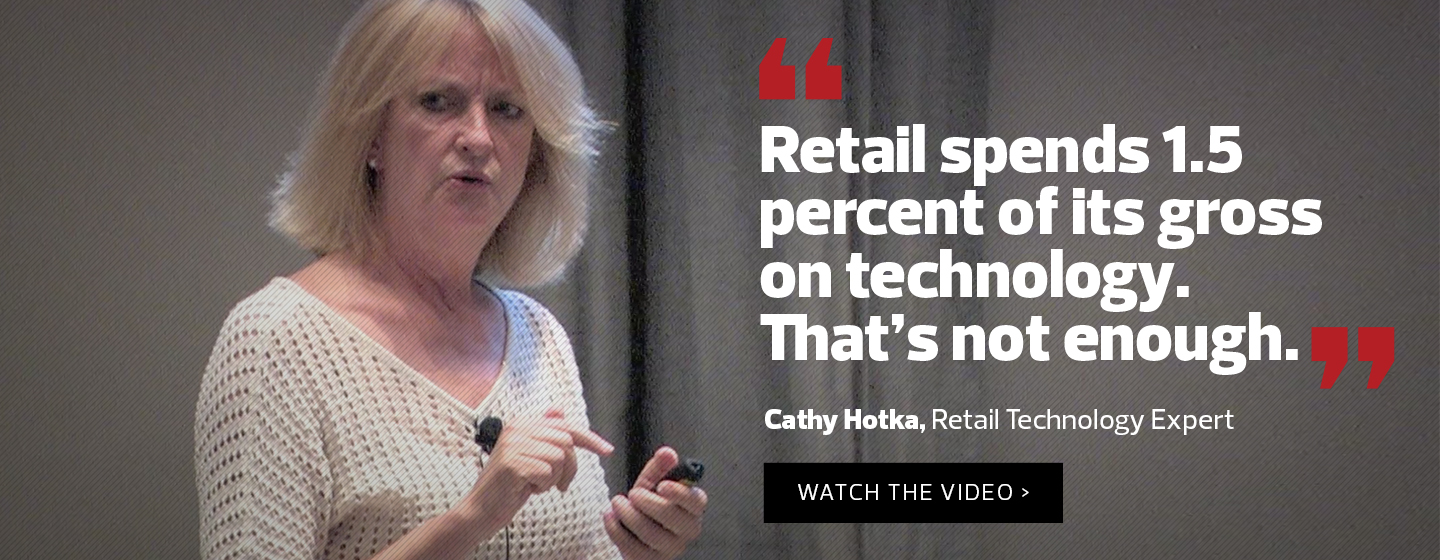5 Survival Tips for Retailers
“Retail was the same for 4,000 years,” says retail technology expert Cathy Hotka. “You put stuff out, and then you waited for people to come to you. It was all about location.”
But technology changes everything. Online retail, mobile and other innovations, Hotka says, have significantly reduced the historical advantage of a good location. To survive, she suggests retailers follow these five imperatives:
Embrace Technology
“Retail spends 1.5 percent of its gross on technology,” says Hotka. “That’s not enough.”
She points to once-strong retailers such as Borders that have collapsed after failing to invest in tech. Facing stiff competition from Amazon — first in the form of electronic commerce and then with the rise of e-books — Borders eliminated its chief information officer position on two separate occasions, Hotka says.
The need to embrace technology, she adds, will only become more pressing as retail increasingly shifts to mobile platforms.
The year by which customer experience will overtake product and price as the key brand differentiator
SOURCE: Walker Information
Know Your Merchandise
Through the use of radio frequency identification tags and other high-tech inventory tools, retailers can give themselves a number of advantages, Hotka says. Accurate, up-to-the-minute inventorying can help prevent loss, speed up shipping and ensure that customers are able to find the products they want.
Hotka points out that customers can’t find an item they’re looking for 7.5 percent of the time, either because it’s out of stock or has simply been placed in the wrong spot. “What this means is that if you can figure this out, you’ve got a 7.5 percent uptick in sales,” she says.
Step Up Security
“The people who want to get into your company and do bad stuff to you — it’s all they do,” Hotka says. “They’re really, really good at it.”
The average data breach costs a company $6.5 million, Hotka notes, and yet many retailers are still reluctant to make cybersecurity investments until it’s too late.
Before the newsmaking TJX breach in 2007, she says, the company’s chief information officer “begged” for funding to shore up cybervulnerabilities. Not only was he denied, but the company fired him after the breach.
Because most retailers aren’t specialists in cybersecurity, Hotka suggests outsourcing it. “If you’re really good at selling athletic wear, you’re probably not so good at security,” she says.
Examine Store Processes
While retailers should strive to incorporate new technologies, Hotka says they should only do so strategically. She gives the example of a store that supplies all of its employees with iPhones — only to find the devices neglected in a drawer because workers were never told how they should use them in the store.
Currently, Hotka says, opportunities exist for retailers to enhance processes around in-store pick-up and mobile beacons.
Stay on Top of Trends
Retailers, Hotka says, should break from their old ways of doing things and “look outside themselves” for trends that can keep them relevant. Today, that might mean reaching customers on Instagram or employing the self-service model utilized by companies like Uber.
Companies should also keep an eye on how robotics and analytics are changing their industry, she says. “You’re about to have an avalanche of new information.”
Learn more about technology’s transformation of retail.










